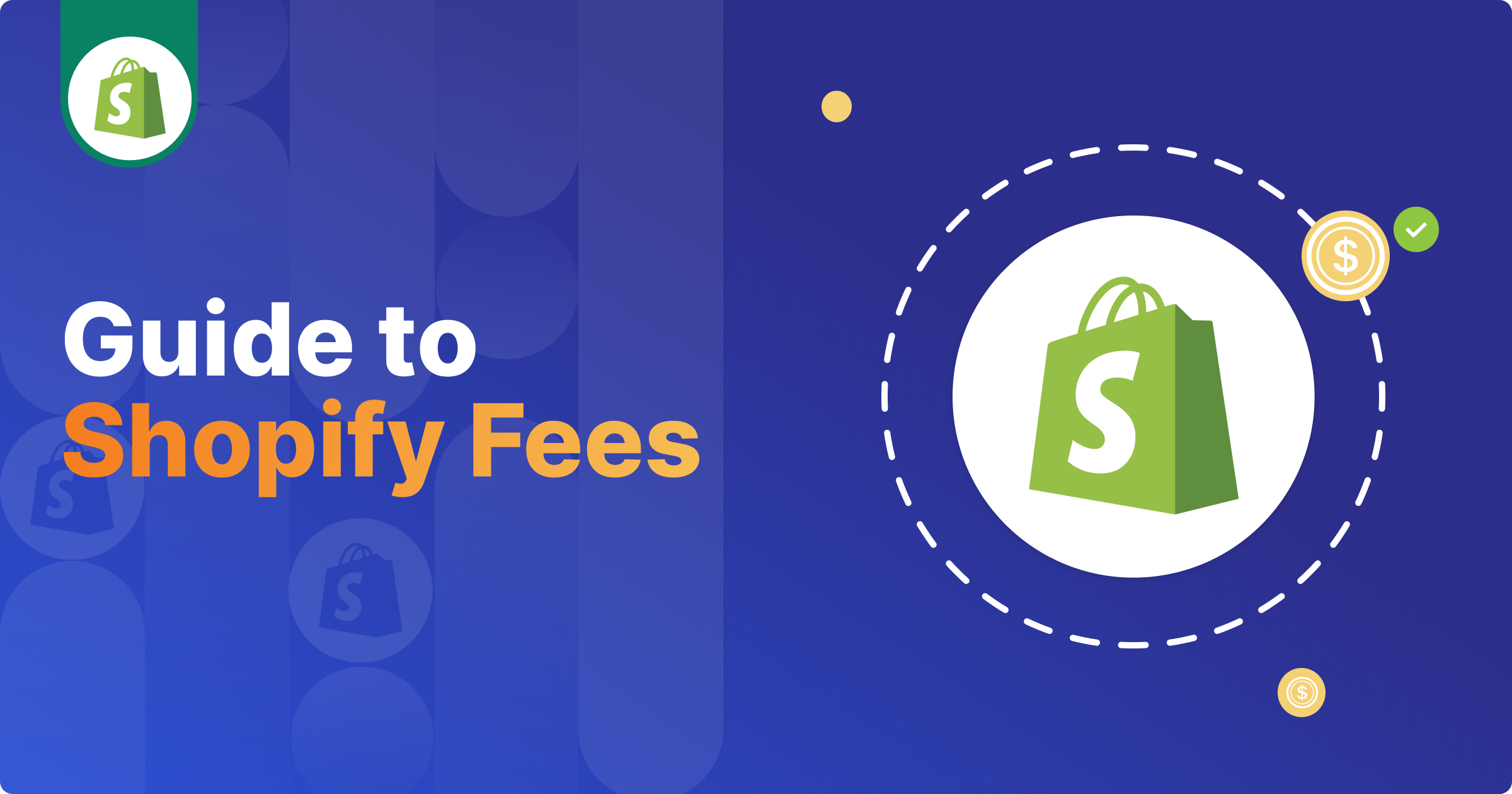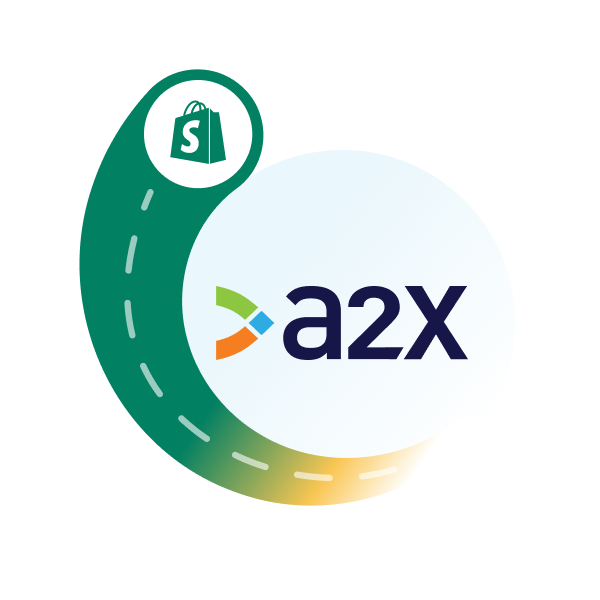Guide to Shopify Fees (and How to Account for Them)
Written by: Amy Crooymans

Paying fees is part of the reality of being a Shopify merchant – and it’s important to understand all the different fees you might encounter on your Shopify selling journey.
In this guide, we break down all of the ongoing fees you might encounter running a Shopify store so that you can be prepared for all your business expenses, and complete your Shopify accounting and bookkeeping easily and accurately.
Why is it important to understand your Shopify fees?
Shopify merchants might not be aware that the amount that Shopify pays you isn’t just sales. It’s actually a combination of sales, fees, shipping income, gift cards, and other transactions.
Being able to distinguish the fees that have been deducted from this amount is incredibly important for several reasons:
- It will help you get an accurate idea of your business expenses, which can help you price products properly and reduce business costs.
- It will enable you to achieve accurate numbers on your income statement and balance sheet, which is critical for understanding business performance, and also for getting a loan or investment.
So, what are some of the fees and transactions you should account for correctly? Let’s dive into the list.
Shopify fees
Note that Shopify fees will vary based on location, plan, and other factors.
Shopify store subscription
Your Shopify subscription is a recurring cost and depends on the plan you choose.
The main three are Basic Shopify, Shopify, and Advanced Shopify, each with its own features. There’s also Shopify Plus, a highly customizable option that powers some of the world’s most well-known brands.
Source: Shopify. (Be sure to check Shopify’s website for up-to-date plans and pricing.)
Theme fee(s)
Shopify offers a variety of themes to help merchants customize the look and feel of their online stores. These themes can be either free or paid, and the fees associated with paid themes are typically one-time costs. The cost of paid themes typically ranges from $100 to $350.
Note: If you require a highly unique design or specific functionality that isn’t available through Shopify’s standard themes, you may opt to hire a designer or developer to create a custom theme. The cost for a custom theme can vary significantly based on the complexity of the design and the developer’s rates. Support fees may be ongoing – make sure you record these properly for accurate accounting.
Domain fees
When you purchase a domain through Shopify, you typically pay an annual fee. The cost of a domain can vary depending on the domain extension (e.g., .com, .net, .shop) and availability.
Domains purchased through Shopify are subject to annual renewal fees, which are generally the same as the initial purchase price. Shopify will automatically renew your domain each year to ensure it remains active, and you will be charged the renewal fee accordingly.
Shopify Payments fees
Shopify Payments is Shopify’s built-in payment processing service.
When you use Shopify Payments to accept credit card payments, you incur payment processing fees, which are typically a percentage of the transaction amount plus a fixed fee. The exact rate can vary based on your Shopify plan.
Unlike when using third-party payment gateways, Shopify Payments does not charge additional transaction fees on top of the credit card rates.
Learn more about Shopify Payments on the Shopify Help Center.
Third-party transaction fees
Shopify’s third-party transaction fees are charges applied when you use a payment gateway other than Shopify Payments. The third-party transaction fees vary depending on your Shopify subscription plan.
These fees are designed to cover the cost of integrating and maintaining connections with third-party payment gateways. By using Shopify Payments, you can avoid these additional transaction fees, though you will still incur standard credit card processing fees.
It’s important to note that these fees are separate from – and in addition to – the fees charged by the third-party payment gateway itself, which will have its own fee structure for processing payments. To minimize overall transaction costs, many merchants opt to use Shopify Payments where available.
Learn more about third-party payment providers on the Shopify Help Center.
Conversion rates and fees
In Shopify, conversion rates and fees refer to the charges associated with selling in multiple currencies and converting those currencies back to your store’s base currency.
Conversion rates refer to the exchange rate at which one currency is converted into another. Shopify uses market rates for currency conversion, which are sourced from financial services providers.
Conversion fees are additional charges applied to the converted amount when you sell in multiple currencies. These fees are meant to cover the cost of the currency conversion service. The conversion fee is a percentage of the transaction amount after it has been converted to your payout currency, and the percentage is set based on your primary country (if you’re using Shopify Payments).
After calculating the currency conversion fee, it is included in the customer’s price to help offset your costs.
Learn more about currency conversion rates and fees on the Shopify Help Center.
Shipping fees
Shopify shipping fees refer to the costs associated with shipping products to your customers.
Shopify offers a number of shipping options that you can provide to your customers, such as using shipping carriers (e.g., UPS or FedEx), offering flat shipping rates or free shipping, calculating shipping at checkout, local delivery and pickup, and using Shopify Shipping.
The method of shipping that you choose will indicate your shipping fees.
If you use Shopify Shipping, any shipping labels purchased through Shopify Shipping will be billed to your Shopify account. Shipping labels may be subject to price adjustments. Learn more about Shopify Shipping billing in the Shopify Help Center.
Returns, refunds, and exchanges
Shopify itself does not charge specific fees for returns, refunds, or exchanges. However, merchants should be aware of the costs that might be associated with handling these processes.
Some of these include:
- Transaction fees – When issuing refunds, the original transaction fee paid to the payment processor is often not returned. For example, Shopify Payments retains the original transaction fee even if the full amount is refunded to the customer.
- Currency conversion fees – If the original transaction involved currency conversion, these fees are generally not refunded.
- Shipping costs – E.g., if you choose to provide a shipping label to cover the cost of return shipping.
There are other costs to consider, too – such as any restocking fees, or the cost of damaged/unsellable items that are returned.
Chargebacks
A chargeback occurs when a customer disputes a transaction and asks their bank or credit card issuer to reverse the charge. This can happen for several reasons, including fraud, dissatisfaction with the product or service, or failure to receive the product.
When a chargeback occurs, merchants are typically charged a fee by their payment processor. For Shopify Payments, the chargeback fee is $15 in the U.S. The chargeback fee is refundable based on your location. In the U.S., Shopify will typically refund the dispute fee if the merchant won the dispute.
Besides the chargeback fee, merchants may lose the revenue from the sale if the dispute is resolved in favor of the customer.
Learn more about chargebacks on the Shopify Help Center.
Other Shopify services
Depending on the other Shopify services you use, you may be subject to additional fees. Let’s break down what these could be.
Shopify Fulfillment Network
The Shopify Fulfillment Network (SFN) offers merchants a range of fulfillment services, and the fees associated with using SFN can vary based on several factors. There are a number of fees you can expect when using the Shopify Fulfillment Network.
Fulfillment fees cover the cost of picking, packing, and shipping orders.
Storage fees are charged for holding your inventory in SFN warehouses. These fees are usually based on volume and duration.
Special handling fees may be charged if your products require assembly or building before shipping, specific packaging materials or methods, or custom labeling.
Returns processing fees may be charged when receiving returns and restocking items.
Inbound shipping fees may be charged when shipping products to SFN warehouses, including freight costs and handling fees.
Calculate your potential fulfillment and storage costs with Shopify’s calculator.
Shopify email
Shopify offers email hosting services through Shopify Email, which allows merchants to create and send email campaigns directly from their Shopify admin. Shopify Email is available to all merchants with Basic, Shopify, Advanced Shopify, and Shopify Plus plans.
Shopify allows merchants to send up to 10,000 emails per month for free. This count is based on the number of individual emails sent (e.g., sending one email to 1,000 subscribers counts as 1,000 emails).
If you exceed the 10,000 free emails in a month, Shopify charges $1 USD for every additional 1,000 emails sent. This cost is prorated, so you only pay for what you use beyond the free allotment.
Shopify POS
Shopify POS (Point of Sale) is a system that allows merchants to sell products in person, such as in a retail store, pop-up shop, or market.
While Shopify POS Lite is included with all Shopify plans at no additional cost, Shopify POS Pro charges a cost per location.
Note that you will likely have other costs associated with a POS – namely, hardware costs such as the cost for a card reader, an iPad stand, a receipt printer, a cash drawer, etc.
Third-party apps
Shopify has thousands of additional apps available on the Shopify App Store, many of which will charge an additional one-time or subscription fee (depending on the app).
Some third-party apps will be charged via Shopify, but some won’t – which is why it’s incredibly important to keep track of all of the fees associated with your Shopify store.
Accounting for Shopify fees
When it comes to correctly accounting for Shopify fees, your first step is to understand the different types of fees – and make sure you have a way to capture them all. Here’s a quick overview of the list provided above:
- Subscription fees
- Theme fee(s)
- Domain fees
- Shopify Payments fees (capture these with A2X – learn more below!)
- Third-party transaction fees
- Conversion rates and fees
- Shipping fees
- Returns, refunds, exchanges
- Chargebacks
- Shopify Fulfillment Network fees
- Shopify Email fees
- Shopify POS fees
- Third-party app fees
Then, you need to properly categorize the fees in your accounting system, and then record, adjust, and reconcile them each month.
For a full guide on how to do Shopify bookkeeping in QuickBooks Online, watch this webinar recording.
For a full guide on how to do Shopify bookkeeping Xero, watch this webinar recording.
Use A2X to capture Shopify Payments fees
A2X is an accounting automation solution that integrates Shopify with your accounting software for easy and accurate Shopify bookkeeping.
A2X automatically imports transaction data from your Shopify store, including sales and Shopify Payments fees. With A2X’s Accounts and Tax Mapping feature, you can categorize expenses automatically into appropriate accounts.
Here are A2X’s default accounts for Shopify.
Shopify Transaction | Category | A2X Default Account Name | GL Account Type |
Discounts | Income | Shopify Sales | Sales |
Gateway Transactions | Current Asset | Shopify Clearing Account | Current Asset |
Other | Other | Shopify Fees | Expense |
Payment and Selling Fees | Expense | Shopify Fees | Expense |
Shipping Expense | Expense | Shopify Shipping Fees | Expense |
Pending Payments | Current Asset | Shopify Pending Balances | Current Asset |
Refunds | Income | Shopify Refunds | Sales |
Sales | Income | Shopify Sales | Sales |
Shipping Income | Income | Shopify Shipping | Revenue |
Tax | Tax | Shopify Tax Collected | Current Liability |
Once you’ve set up your accounts and tax mappings in A2X, A2X will then automatically categorize every transaction in your Shopify payouts accordingly.
Then, you can send your payout data from A2X to your accounting software, where it will match perfectly with the corresponding transaction in the bank feed for easy reconciliation.
Note that there are some fees that are not associated with Shopify sales that you’ll need to enter directly from Shopify – these can typically be found in the billing or payments section of Shopify.
Accounting for Shopify has never been so easy!

Integrate Shopify and your accounting software for accurate accounting
A2X auto-categorizes your Shopify sales, fees, taxes, and more into accurate summaries that make reconciliation in your general ledger a breeze.
Try A2X today
